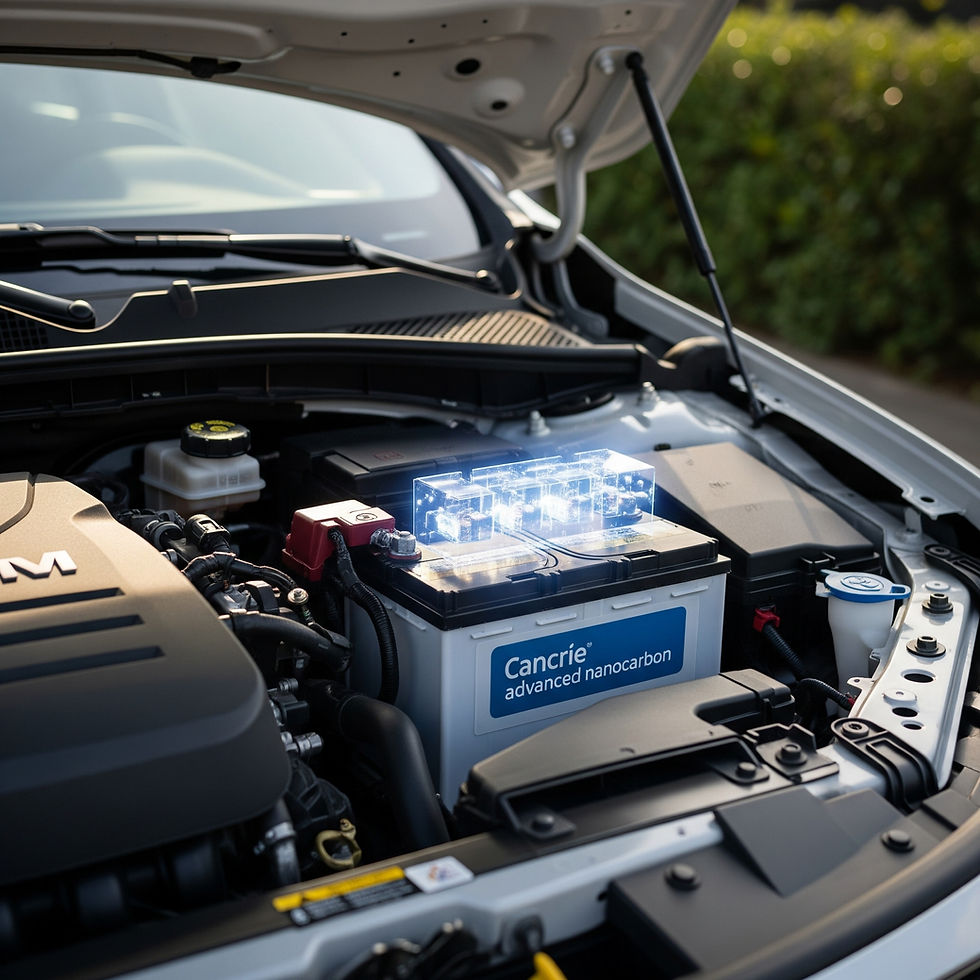Enhancing Automotive Lead-Acid Battery Performance with ‘Cancrie’ Nanocarbon
- cancriecarbon
- Jul 17
- 2 min read

In India’s hot climate and congested traffic conditions, automotive and start-stop lead-acid batteries face serious durability challenges. Frequent engine restarts, rough roads, and high ambient temperatures contribute to early battery failure, especially in vehicles running short cycles or in city traffic.
‘Cancrie’ Nanocarbon is a next-generation negative plate additive engineered to tackle these real-world problems without disrupting existing production processes. It has been rigorously validated at ARAI and international labs under IEC 60095 and BIS:14257 protocols for SLI applications.
Field-Level Challenges Addressed
High Under-Hood Temperatures & Water Loss
Conventional carbon additives often cause hydrogen evolution, leading to water loss and drying of plates—especially under high-temperature engine compartments.
Cancrie Nanocarbon maintains thermal stability and does not accelerate water loss, ensuring compliance with BIS limits for water consumption. Suitable for both flooded and low-maintenance VRLA batteries.
Inefficient Charging During Short Drives
Start-stop vehicles often run short distances, leaving little time for battery recharge. Traditional formulations develop high internal resistance over cycles, leading to poor charge recovery and heat generation.
Cancrie Nanocarbon enhances electrical conductivity within the negative active mass, reducing internal resistance. This helps keep internal temperatures lower during recharge, improving battery safety and longevity in repeated use.
Vibration Damage on Poor Roads
Indian roads cause constant shocks and vibrations that lead to plate shedding and early capacity loss.
Cancrie Nanocarbon improves structural integrity of the negative plate by reinforcing the active material, offering better resistance to vibration and mechanical stress. Performance is validated under the vibration and shock sections of IEC 60095.
Sulfation and Performance Drop
Urban driving with frequent starts and partial charges often leads to sulfation of the negative plate, degrading performance.
Cancrie Nanocarbon offers improved porosity and ion mobility, reducing the likelihood of hard sulfation and supporting stable long-term operation.
Key Advantages for Manufacturers
⚡ Lower internal resistance → reduced temperature rise during charging
💧 Zero increase in water loss → safe for hot climates and MF batteries
🛠️ Improved vibration resistance → reduced plate shedding on rough roads
🔩 Better long-term charge retention → reliable performance under urban driving
🧪 Tested rigorously at ARAI & certified international labs
Drop-In Additive, Proven at Scale
‘Cancrie’ Nanocarbon is compatible with existing paste mixing, curing, and formation setups. It has already been deployed in large-scale production runs for SLI and start-stop batteries, helping small and mid-size manufacturers improve product quality without any burden or process changes.
If you're working to improve the performance and reliability of your automotive or start-stop batteries for Indian roads and traffic conditions, Cancrie Nanocarbon offers a tested, practical, and affordable solution.


Comments